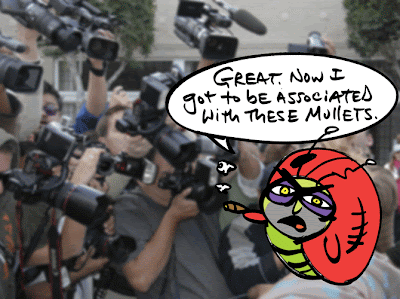
Wednesday, December 31, 2008
Tuesday, December 30, 2008
Monday, December 29, 2008
Sunday, December 28, 2008
Saturday, December 27, 2008
Classic.
Friday, December 26, 2008
Thursday, December 25, 2008
Sunday, December 21, 2008
Thursday, December 18, 2008
Wednesday, December 17, 2008
Tuesday, December 16, 2008
Monday, December 15, 2008
Sunday, December 14, 2008
Friday, December 12, 2008
Thursday, December 11, 2008
Wednesday, December 10, 2008
Tuesday, December 9, 2008
Monday, December 8, 2008
Sunday, December 7, 2008
Saturday, December 6, 2008
Thursday, December 4, 2008
Wednesday, December 3, 2008
Monday, December 1, 2008
Sunday, November 30, 2008
Saturday, November 29, 2008
Friday, November 28, 2008
Thursday, November 27, 2008
Wednesday, November 26, 2008
Tuesday, November 25, 2008
Monday, November 24, 2008
Sunday, November 23, 2008
Monday, October 27, 2008
Sunday, October 26, 2008
Wednesday, October 15, 2008
Tuesday, October 14, 2008
Beware of Businessman Bill

Wednesday, October 1, 2008
Saturday, September 20, 2008
Thursday, September 18, 2008
Monday, September 15, 2008
$ee You at the Oscar's!


*If you were to see a casual photographer around town and called him a paparazzi, beware; he might be tempted to throw his camera at you, especially if he considers himself to be a
photojournalist. So what's the difference you may ask? The answer is in the meaning of
paparazzi, "buzzing insects."
In 1960, these pesky freelance journalists were immortalized in Federico Fellini's internationally popular film La Dolce Vita, Italian for "The Sweet Life." La Dolce Vita focuses on the life of a jaded journalist, Marcello (played by Marcello Mastroianni), and his
photographer colleague, Paparazzo (Walter Santesso). The origin of the name Paparazzo is
disputed, but its onomatopoeic resemblance to the Sicilian word for an oversize mosquito,
papataceo,made it apt to compare with Fellini's statement: "Paparazzo suggests to me a
buzzing insect, hovering, darting, stinging." Fellini also drew an image of the character in
which he describes; the drawing is of a human-like figure that has no bone structure and instead, looks like a vampirish insectile, implying that paparazzi, like mosquitoes, are also parasites.
After the movie was first released in Italy, the word paparazzi became synonymous with
intrusive photographers who chase the stars to get that revealing act on film. However, Fellini said it was not the photographers he tried to emulate. Fellini claimed that he was putting newspapers and weeklies on film, and many of the vignettes that make up the movie refer directly to news stories. He wanted to capture the paparazzi-inspired events where reporters often begged involved parties for a story. However, it was the freezing-frenzied movements in the pictures captured by the photographer that sparked viewer interest, even for Fellini. "It recreates life in movement," he once stated.
The incorporation of the word paparazzi into the English language is indefinitely tied to La
Dolce Vita when it was released in the United States in 1961. Time magazine introduced the
word to the American public in an article entitled, "Paparazzi on the Prowl." Included is a
paparazzi picture of throngs of reporters blocking the car of a princess visiting Rome. The text discloses "a ravenous wolf pack of freelance photographers who stalk big names for a living and fire with flash guns at a pointblank." Soon, the term would be spread across the pages of major news and entertainment publications across the globe, often accompanied by incriminating photos of the stars. Publications that were soon to follow this trend included Esquire, Cosmopolitan, and Life magazine. It was later introduced on the television screen by popular news-oriented shows like 60 Minutes. But no matter what the medium used to report on these "celebrity bounty hunters," it was clear that paparazzo was a derogative term.

* from PAPARAZZI HISTORY
http://iml.jou.ufl.edu/projects/Spring99/Johnson/page1.htm
Friday, September 12, 2008
Wednesday, September 10, 2008
Monday, September 8, 2008
Who you callin' lady?














































